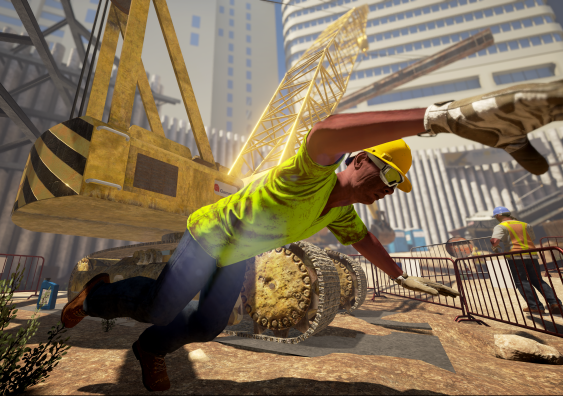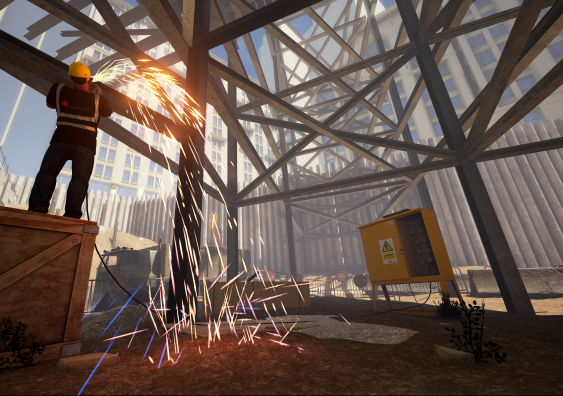Gaming technology transforms construction safety training
An award-winning, virtual reality training platform designed to help reduce accidents on construction sites has been adopted by industry in Asia with interest from Australia.
An award-winning, virtual reality training platform designed to help reduce accidents on construction sites has been adopted by industry in Asia with interest from Australia.

Fran Strachan
Communications Manager Low Carbon Living CRC
+61 2 9385 5402
fran.strachan@unsw.edu.au
An award-winning, virtual reality training platform designed to help reduce accidents on construction sites has been adopted by the construction industry in Asia with interest from Australia.
The Situation Engine, designed by Associate Professor Sidney Newton and Russell Lowe at UNSW Built Environment, has been awarded a Premier Innovation in Education and Training Award by the UK-based Chartered Institute of Building.
Based on gaming technology, The Situation Engine allows construction workers to navigate potentially life-threatening scenarios by ‘virtually’ walking through 3D building sites using a computer or oculus rift headset. It is is the first software of its kind to be developed by construction safety experts.
The judging panel said it is “at the leading edge of current applications of gaming technologies for practical training in the construction sector”.
“For these scenarios to be convincing and for people to change their behaviour the sites need to look authentic and the hazards have to be realistic."
Major Hong Kong-based firm, Gammon Construction, has used the hyper-real platform for the past six months and credit it with significantly reducing training times. China’s leading power generation company, China Light and Power, is also reviewing the system as a way to extend its safety training.
In Australia, Brookfield Multiplex is proposing to use The Situation Engine to better engage and train construction workers in Queensland.
Safe Work Australia reported more than 400 deaths on construction sites between 2003-2013.
The Situation Engine is also used as an educational tool in the construction management and architecture programs at UNSW and other Australian universities.
Newton says the hyper-real environment engages workers and students more effectively than theoretical tests.

“The Situation Engine allows students to experience several different sites at varying stages of construction, all of which pose risks like electrocution, falling objects or working at elevated heights.The class can observe and forensically diagnose problems as they walk through different scenarios.”
Newton and Lowe have accurately replicated Australian construction sites, right down to machinery, signs and equipment.
“For these scenarios to be convincing and for people to change their behaviour the sites need to look authentic and the hazards have to be realistic,” says Newton
Lowe says it is important for architecture students, in particular, to understand hazards on building sites.
“First-year students have no on-site experience but as practising architects they’ll need to know how to behave on building sites. The Situation Engine allows them to act as a virtual site manager or building surveyor and assess and evaluate the safety issues,” says Lowe, a senior lecturer in architecture studies and computational design.
The Situation Engine builds on an Australian Government Office for Learning and Teaching project in partnership with the University of South Australia, the University of Adelaide and Western Sydney University.
The partners developed the Situational eLearning Adaptive Repository (SeLAR), an open-access website of construction site images, lecture notes, models and plans that students can use to customise their own virtual construction sites.
“We develop the basic software but the idea is for each student or company to tailor-make their own virtual construction site – the SeLAR website gives them everything they need to do that,” says Lowe.
To date 800 students across Australia have accessed the website.